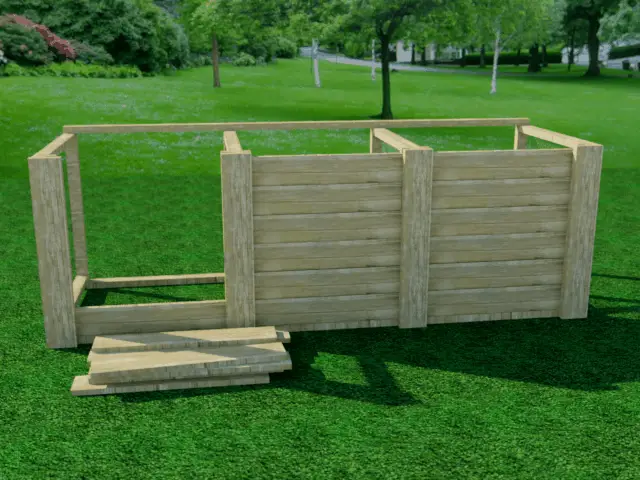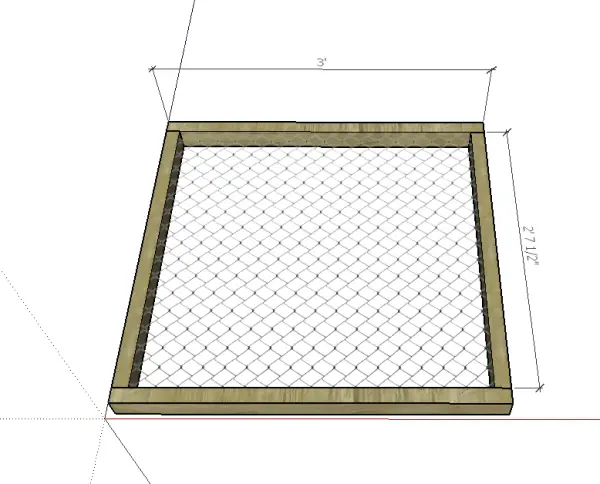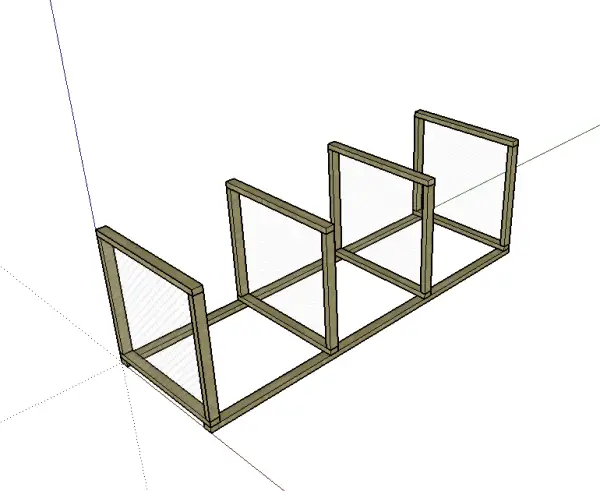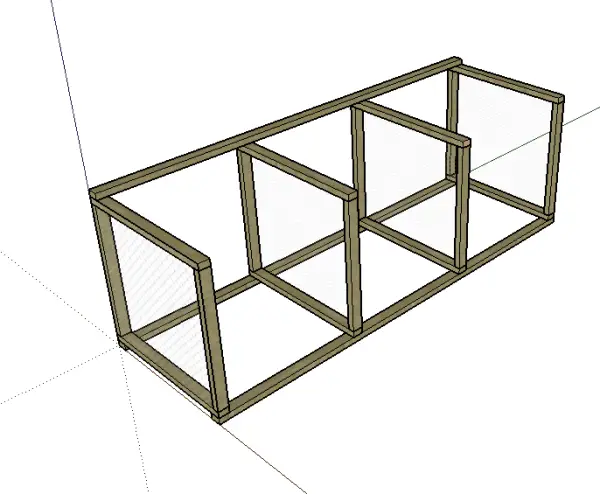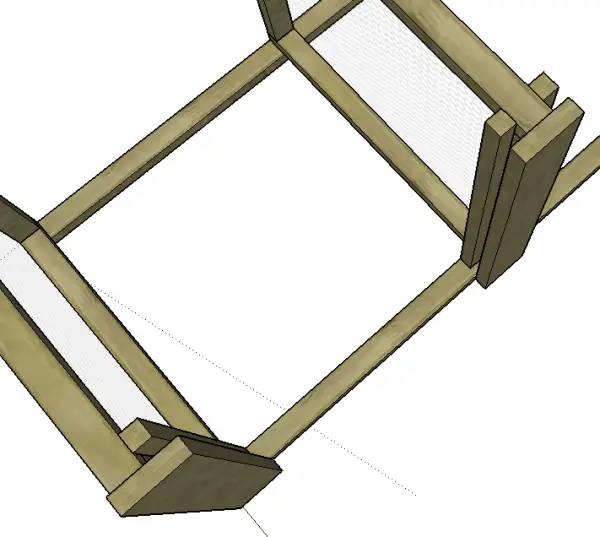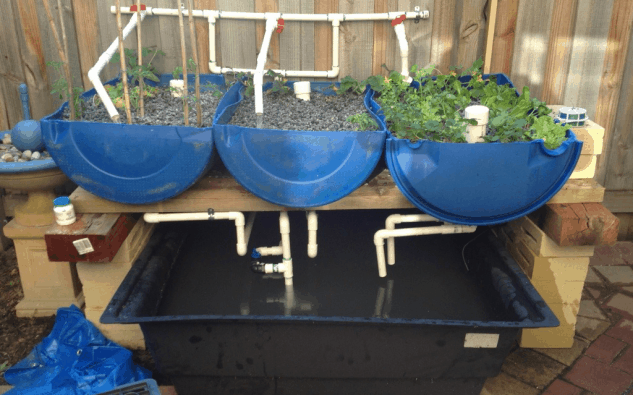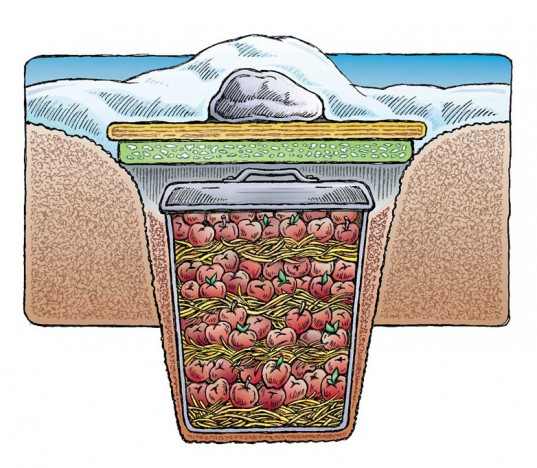Table of Contents
Last week I posted a popular article on making compost, and the feedback was incredible. I had a few people ask about building a sturdy 3-bay compost bin.
I was going to send them a few images of the bin I currently use (three wood pallets bolted together.
Right before I pressed the send button on my email, I realized what I currently have is not that great. I set out to find a new design that I can build myself and share with all of you.
After doing some research, I found some plans online from the University of Missouri. While reading through them, my creative side took over, and I came up with a few versions of my own. I booted up my computer and proceeded to create the design in AutoCAD. The following is what I have created from the existing plans.
3-Bay Compost Bin Materials
The following list of materials is needed to build a compost bin this rugged. If you have scrap material laying around, you can skimp here and there, use different sizes of lumber, etc.
That will cut costs. It doesn’t have to be symmetrical or pretty; it just needs to be functional.
- (4) 12ft pc of 2x4s
- (2) 10ft pc of 2x4s
- (1) 10-foot length of construction-grade 2×4 lumber
- (1) 16-foot length of 2×6 lumber
- (6) 8-foot lengths of 1×6 lumber
- (1) 22-foot length of 36-inch-wide 1/2-inch hardware cloth
- 16d galvanized nails (2 pounds)
- Poultry wire staples (250)
- (12) 1/2-inch carriage bolts, 4 inches long, with washers and nuts
- One quart wood preservative like linseed oil (optional)
What Kind of Lumber for a Compost Bin?
Boards for a compost bin can be pine or hemlock; it doesn’t matter. Cedar will be a favorite for many, but it may not be worth the extra cost (see wood myths).
You could use a natural wood preservative like raw linseed oil as another option. I just stuck with untreated pine for my bin.
I would not recommend pressure-treated lumber just because of the chemicals. You are presumably using this compost for growing vegetables.
Do you really want to incorporate pressure-treated lumber into that process? Not me.
3-Bay Compost Bin Plans
Follow these free plans to build your 3-bay compost bin.
Step 1: Cut two 31-1/2-inch and two 36-inch pieces from a 12-foot length of 2 x 4 lumber. Butt-joint and nail the four pieces into a 35-inch x 36-inch “square”.
Repeat, building three more frames with the remaining 12-foot lengths of 2 x 4 lumber.
Step 2: Cut four 37-inch lengths of hardware cloth.
Fold back the edges of the wire 1 inch. Stretch the pieces of hardware cloth across each frame.
Make sure the corners of each frame are square, and then staple the screen tightly into place every 4 inches around the edge. The wood and wireframes will be dividers in your composter.
Step 3: Set two dividers on the end, 9 feet apart and parallel to each other.
Position the other two dividers so that they are parallel to and evenly spaced between the end dividers.
Place the 36-inch edges on the ground. Measure the position of the centers of the two inside dividers along each 9-foot edge.
Step 4: Cut a 9-foot piece from each 10-foot length of 2 x 4 lumber.
Place the two boards across the tops of the dividers so that each is flush against the outer edges.
Measure and mark on the 9-foot boards the center of each inside divider.
Step 5: Line up the marks, and through each junction of board and divider, drill a 1/2-inch hole centered 1 inch from the edge.
Secure the boards with carriage bolts, but do not tighten them yet. Turn the unit so that the treated boards are on the bottom.
Step 6: Cut one 9-foot piece from the 10-foot length of construction-grade 2 x 4 lumber.
Attach the board to the back of the top by repeating the process used to attach the baseboards. Using the carpenter’s square, or measuring between opposing corners, make sure the bin is square.
Tighten all the bolts securely.
Step 7: Fasten a 9-foot length of hardware cloth to the back side of the bin, with staples every 4 inches around the frame.
Step 8: Cut four 36-inch-long pieces from the 16-foot length of 2 x 6 lumber for front runners. (Save the remaining 4-foot length.)
Rip-cut two of these boards to two 4-3/4-inch-wide strips (save the two remaining strips).
Step 9: Nail the 4-3/4-inch-wide strips to the front of the outside dividers and baseboard so that they are flush on the top and the outside edges.
Center the two remaining 6-inch-wide boards on the front of the inside dividers flush with the top edge and nail securely.
Step 10: Cut the remaining 4-foot length of 2 x 6 lumber into a 34-inch-long piece, and then rip-cut this piece into four equal strips.
Trim the two strips saved from Step 8 to 34 inches. Nail each 34-inch strip to the insides of the dividers so that they are parallel to, and 1 inch away from, the boards attached to the front.
This creates a 1-inch vertical slot on the inside of each divider.
Step 11: Cut the six 8-foot lengths of 1 x 6 lumber into 18 slats, each 31-1/4 inches long.
Insert the horizontal slats, six per bin, between the dividers and into the vertical slots.
Copyright 1993 to 2013 University of Missouri. Published by MU Extension, all rights reserved.
Advantages of 3-Bay Compost Bins
For those having small backyard space, 3-bay compost bins will get the most out of it. It creates a top-quality hot or cold compost. The best part is that they don’t cover a huge space. Instead, with the right ingredients and treatment, the compost is created within a couple of months.
With the compost covering a small space, the overall compost pile would not have much weight. You will save a lot of energy and time turning the pile every day because the pile will be much small and lighter.
Besides, you can add the compost contents directly from the kitchen or garden for over a year or so. You won’t have to wait for the huge pile to compost as you can harvest whenever needed. The decomposing process will be prolonged. You will be adding ingredients while the compost is still developing. The overall cycle will be easy to manage with the option to harvest whenever you like.
Besides, a 3-bay compost bin is more attractive than the traditional method. It can also be enclosed to restrict pests and insects from breaching.
Further Compost Reading
Composting is great for your garden and easy to do.
You can take the long approach to compost and just toss different materials into the bin and leave it for a long time, or you can be more of an active composter.
By that, I mean really getting into it.
Composting is easy, almost brainless, but armed with a bit of compost bin knowledge, you can speed your composting up and create a better mix overall. Here are a few books to help you along:
- Let It Rot! The Gardener’s Guide to Composting by Stu Campbell
- Composting for Dummies by Cathy Cromell
- Organic Book of Compost: Easy and Natural Techniques to Feed Your Garden by Pauline Pears
Two other products I also found helpful were a stainless steel compost bin for the kitchen counter and a crank compost aerator.
Let me know what works for you in the comments below. Got compost?


